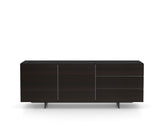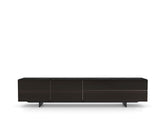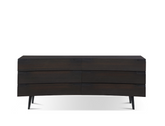Feng Shui Secrets for a Harmonious Singapore Home

If you find yourself feeling overwhelmed by the fast-paced life of Singapore, creating balance and harmony at home could be the key to achieving a sense of serenity. One effective way to bring this balance into your living space is through the practice of Feng Shui, an ancient Chinese design philosophy that focuses on the arrangement of your environment to enhance the flow of positive energy.
What is Feng Shui Home Design?
Feng Shui home design involves the strategic positioning of furniture, rooms, and décor to promote harmony and positive energy flow, known as Chi. This design practice is deeply rooted in the Bagua map and the five elements theory, which play a crucial role in determining the layout, direction, and overall energy of your home.
Feng Shui is becoming increasingly popular in Singaporean interior design, especially in HDB flats and BTO home renovations. Whether you're looking to bring peace, prosperity, or health into your life, incorporating Feng Shui principles into your home's design can give your living space a unique and refreshing twist.
Singapore Interior Design and Home Renovation with Feng Shui Principles
Feng Shui is no longer just a practice reserved for palaces or grand estates; it's making its way into modern home renovations and interior design projects across Singapore. Many homeowners are integrating these principles to enhance the flow of energy within their homes, creating spaces that feel balanced and harmonious. In particular, the careful placement of furniture and the use of natural elements like wood, fire, metal, water, and earth can significantly improve the energy flow in a room.
One area where Feng Shui has become especially prevalent is in the dining room. By positioning furniture strategically, using natural elements, and ensuring the room is well-lit and ventilated, you can transform your dining area into a space that promotes harmony and fosters positive energy.
The Five Elements in Feng Shui
At the core of Feng Shui is the concept of the Five Elements: Wood, Fire, Earth, Metal, and Water. These elements are interconnected and interact with each other in a continuous cycle of creation and destruction. Understanding how to balance these elements can help create a more harmonious living environment. Let's break down each element and how it can be incorporated into your home’s interior design:
Wood
Wood represents growth, vitality, and creativity. It encourages personal development and fosters a sense of renewal. You can introduce the Wood element into your home by incorporating wooden furniture, plants, or artwork that features trees and greenery. For example, a sleek wooden dining table or an indoor plant placed in the living room can enhance the Wood element in your home.
Fire
Fire symbolizes passion, warmth, and transformation. It brings energy and excitement into a space, making it ideal for social areas like the living room or dining room. Consider adding candles, warm-toned lighting, or decorative items in shades of red, orange, or purple to introduce the Fire element.
Earth
Earth embodies stability, grounding, and support. It promotes a sense of calm, making it perfect for bedrooms and tranquil spaces. Earth tones like brown and yellow, along with natural materials like clay, ceramics, or stone, can bring the Earth element into your home.
Metal
Metal signifies strength, focus, and order. It brings clarity and structure to a space. Incorporate metal into your home with metallic accents, stainless steel appliances, or décor items featuring geometric patterns. Metal-framed mirrors or sleek metal furniture can be stylish ways to include this element.
Water
Water represents flow, abundance, and emotional connection. It creates a soothing atmosphere ideal for relaxation and rejuvenation. You can introduce the Water element through water features, mirrors, or décor in shades of blue or black.
Balancing these Five Elements is crucial in Feng Shui design, as an excess or deficiency in any one element can disrupt the harmony in your living space. By carefully considering these elements in your home renovation or design project, you can create a balanced environment that promotes well-being.
The Bagua Map: Feng Shui’s Blueprint for Your Home
The Bagua Map is a key tool in Feng Shui, acting as a guide to help you arrange your living space for optimal energy flow. This octagonal grid is divided into eight areas, or guas, each representing a specific life aspect—such as wealth, fame, relationships, health, and career. Each gua is associated with one of the Five Elements, a specific color, and other attributes.
Here’s how to use the Bagua Map in your home:
- Draw a Floor Plan: Sketch out the layout of your home, including all rooms, doors, and windows.
- Align the Bagua: Place the Bagua Map over your floor plan, aligning it with the wall that contains your main entrance. This will help you determine which gua corresponds to each part of your home.
- Enhance the Guas: Each gua is linked to a life aspect, such as wealth, health, or relationships. Enhance these areas with the corresponding element, color, or material to boost positive energy.
For example, the Wealth and Prosperity gua corresponds to the Wood element and is enhanced by the color purple. To boost wealth energy in this area of your home, consider adding a wooden piece of furniture in purple tones or a plant to enhance the Wood element.
Applying the Bagua Map to your home design or renovation can help you create a space that nurtures your well-being, allowing you to thrive in different areas of your life.
Feng Shui Tips for Interior Design and Renovation in Singapore
Feng Shui is more than just arranging furniture—it's about creating an environment that promotes positive energy. Here are some Feng Shui tips to keep in mind when designing or renovating your Singaporean home:
- Clear Clutter and Create Open Spaces: Clutter disrupts the flow of Chi, leading to stagnant energy. Keep your home organized and clutter-free to encourage a vibrant and uplifting atmosphere.
- Prioritize Natural Light and Ventilation: Natural light and fresh air are essential for maintaining positive energy. Ensure your home has ample windows, and consider adding mirrors to reflect light and enhance energy flow.
- Focus on the Main Entrance: The main entrance is where energy enters your home. Keep this area clean and unobstructed, and consider adding plants, water features, or artwork that symbolizes prosperity.
- Balance the Five Elements: Ensure that all Five Elements are present in your home to create a balanced and harmonious environment. Use colors, materials, and objects that represent each element and distribute them throughout your space.
- Choose Favorable Furniture Placement: Proper furniture placement can significantly impact the flow of energy in your home. For example, position your bed so you have a clear view of the door but aren’t directly in line with it. Similarly, arrange your sofa and chairs in a way that promotes easy conversation and energy flow.
- Incorporate Curved and Rounded Shapes: Sharp corners and edges can create harsh energy. Opt for rounded or curved furniture and décor to soften the energy in your space.
- Pay Attention to Color Choices: Color plays a crucial role in Feng Shui. Choose colors that align with the desired element for each room, and aim for a balance between warm and cool tones to create a harmonious environment.
- Consider Auspicious Symbols and Artwork: Decorate your home with symbols of abundance, harmony, and happiness, such as images of nature, water features, or traditional Chinese symbols like the dragon or phoenix.
Feng Shui FAQs
Q: Can Feng Shui be applied to small HDB flats in Singapore?
A: Yes, Feng Shui can be applied to any living space, regardless of size. The key is to ensure a smooth flow of energy, clear clutter, and strategically place furniture to enhance balance and harmony.
Q: How can I use Feng Shui to attract wealth into my home?
A: To attract wealth, focus on the Wealth and Prosperity gua. Enhance this area with the Wood element, the color purple, and symbols of abundance such as plants or water features.
Q: Can I use Feng Shui in a modern interior design style?
A: Absolutely. Feng Shui principles can be seamlessly integrated into any interior design style, including modern designs. It’s all about balance, harmony, and energy flow, regardless of the aesthetic.
By incorporating these Feng Shui principles into your home design and renovation, you can create a living space that supports your well-being, fosters positive energy, and enhances your lifestyle. At Prestige Affairs Furniture, we offer a curated selection of furniture that aligns with Feng Shui practices, helping you achieve a harmonious and stylish home.







